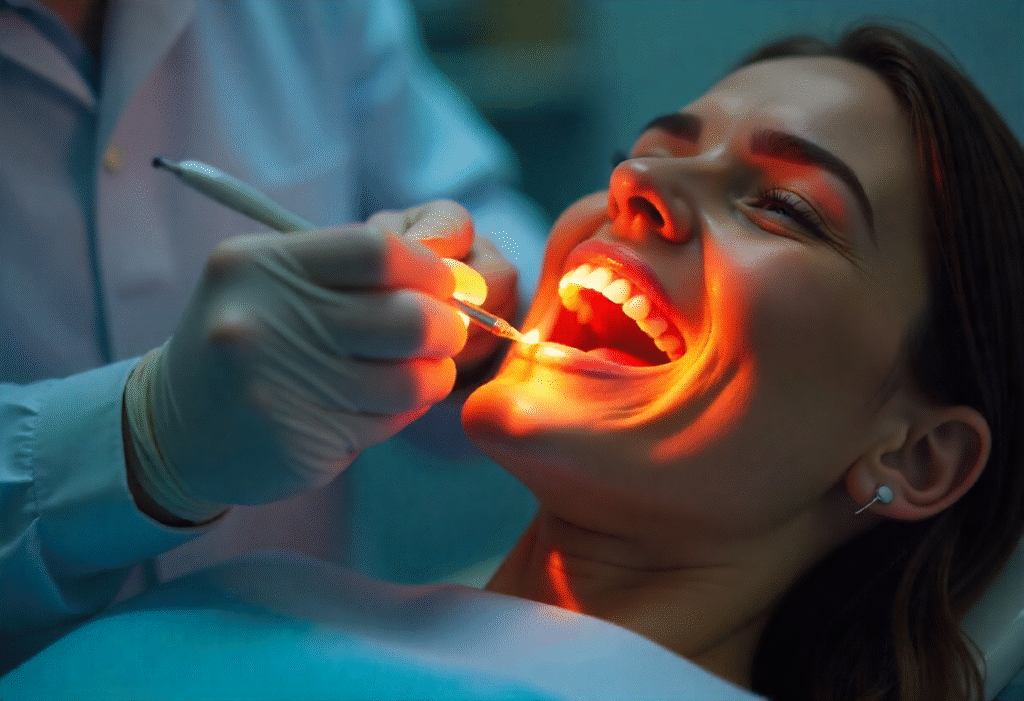PRR dental refers to Preventive Resin Restoration, a minimally invasive dental treatment used to protect teeth—especially molars and premolars—from decay. This technique combines the benefits of a sealant and a small composite restoration, making it an excellent choice for treating teeth that have deep grooves or pits susceptible to caries but without extensive decay. Dentists often use PRR for children, teens, and adults who are at moderate risk of cavities.
In simple terms, PRR is like giving your tooth a protective shield before decay gets too far. It’s different from a traditional filling because it requires less drilling and preserves more natural tooth structure.
Understanding Preventive Resin Restoration (PRR)
PRR is designed for teeth that are not yet severely decayed but show early signs of enamel breakdown in the fissures. These fissures, found on the chewing surfaces of molars and premolars, can trap food and bacteria, making them prime spots for cavity development.
Unlike a full filling, PRR involves removing only the softened enamel, cleaning the surface, and applying a resin-based material to seal and protect the tooth.
When PRR Dental Treatment is Recommended
Dentists usually recommend PRR for:
-
Teeth with deep pits and fissures prone to decay
-
Early carious lesions confined to enamel
-
Children’s permanent molars soon after eruption
-
Patients with moderate caries risk
-
Situations where sealants alone might not be sufficient
Benefits of PRR Dental Treatment
-
Minimally Invasive – Conserves more healthy tooth structure
-
Prevents Decay Progression – Stops early caries from advancing
-
Long-Lasting Protection – Resin material can last several years with proper care
-
Painless Procedure – Usually requires minimal or no anesthesia
-
Cost-Effective – Less expensive than a full dental filling or crown
Difference Between PRR and Dental Sealants
While both PRR and sealants aim to prevent decay, they are different:
| Feature | PRR Dental | Sealants |
|---|---|---|
| Removes Early Decay | Yes | No |
| Material | Resin composite | Sealant resin |
| Coverage | Small restoration + sealant | Sealant only |
| Longevity | Higher | Moderate |
| Indication | Early decay in pits/fissures | Preventive protection only |
How PRR Dental Treatment is Performed
Step 1: Examination and Diagnosis
The dentist examines the tooth visually and may use a dental explorer or laser cavity detector to assess early decay. Sometimes, bitewing X-rays are taken to confirm the diagnosis.
Step 2: Cleaning the Tooth
The tooth surface is cleaned to remove plaque, food debris, and superficial stains.
Step 3: Removing Minimal Decay
Only the affected enamel is gently removed using a dental bur or air abrasion tool.
Step 4: Acid Etching
The surface is etched with a mild acid to prepare it for bonding.
Step 5: Resin Application
A tooth-colored resin is applied to fill the cleaned-out pits and fissures.
Step 6: Curing
A special curing light hardens the resin in seconds.
Step 7: Polishing and Finishing
The dentist polishes the restoration for a smooth bite.
Materials Used in PRR Dental Procedures
-
Resin Composite – For strength and aesthetics
-
Glass Ionomer Cement – Sometimes used as a base layer for added fluoride release
-
Sealant Resin – To cover adjacent grooves for extra protection
Longevity of PRR Dental Restorations
With proper oral hygiene and regular dental check-ups, PRR restorations can last 5 to 10 years. Longevity depends on factors like chewing habits, diet, and whether the patient grinds their teeth.
PRR Dental for Children
Children’s permanent molars often have deep grooves, making them ideal candidates for PRR. The treatment is quick, painless, and can prevent the need for more invasive fillings later in life.
PRR Dental for Adults
While more common in children, PRR is also effective for adults with early-stage decay or naturally deep fissures in their molars.
Possible Risks and Limitations
-
Not Suitable for Extensive Decay – If the cavity extends into dentin, a full filling is required
-
Material Wear – Resin may chip or wear over time in heavy chewers
-
Replacement Needs – May require replacement after several years
Cost of PRR Dental Treatment
Costs vary depending on location, dentist experience, and materials used. In the U.S., PRR typically ranges from $50 to $200 per tooth, making it more affordable than traditional fillings.
PRR vs. Traditional Fillings
-
PRR – Removes minimal tooth structure, preserves enamel, best for early decay
-
Filling – Removes more tooth structure, necessary for deeper decay
Preventing Decay Before PRR is Needed
-
Brush twice daily with fluoride toothpaste
-
Floss daily to remove plaque between teeth
-
Reduce sugary snacks and drinks
-
Visit the dentist every six months
-
Consider sealants for high-risk molars
Advancements in PRR Dental Technology
Modern PRR uses nanocomposite resins with improved wear resistance and color matching. Digital diagnostic tools also allow dentists to detect decay earlier, leading to more preventive treatments.
PRR in Preventive Dentistry
Preventive dentistry focuses on stopping dental issues before they become serious. PRR fits perfectly into this approach by addressing early decay with minimal intervention.
Patient Experience During PRR
Most patients find PRR comfortable since it often doesn’t require anesthesia. The procedure typically takes less than 30 minutes per tooth.
Aftercare for PRR Dental Restorations
-
Avoid hard foods for 24 hours after treatment
-
Maintain good oral hygiene
-
Visit the dentist for regular check-ups
-
Report any discomfort or chipping to your dentist immediatelyAlso read :
Also read: Delco Dispatch Alerts: Stay Ahead of Emergencies with Real-Time Updates
FAQs
Is PRR better than a filling?
For early decay, PRR is better because it preserves more tooth structure.
Does PRR hurt?
No, it’s usually painless and may not require anesthesia.
How long does PRR last?
On average, 5–10 years with proper care.
Is PRR covered by insurance?
Many dental insurance plans cover PRR for children, but adult coverage varies.
Can PRR be done on baby teeth?
It’s usually done on permanent teeth, but in some cases, it can be applied to baby molars.
Can PRR fail?
Yes, if decay progresses underneath or the material wears away, replacement may be needed.
Conclusion
PRR dental treatment is a valuable tool in modern dentistry for protecting teeth from decay without the need for invasive drilling. It combines the benefits of sealants and small restorations, making it ideal for patients with deep fissures and early caries. With advancements in materials and technology, PRR continues to be a reliable, cost-effective, and minimally invasive option for long-term dental health.



